Isle Royale National Park is a United States National Park comprising Isle Royale and the surrounding waters and small islands, a wilderness preserve in northwest Lake Superior. It's easily identified on maps of the Great Lakes: Lake Superior resembles the profile of a snarling wolf; Isle Royale is the eye. Although it's closer to Ontario, Canada, or even Minnesota, USA, it's part of the state of Michigan. Its French name might lead you to pronounce it "eel roy-AL", but the common pronunciation is the anglicized version, "ile ROY-ul".
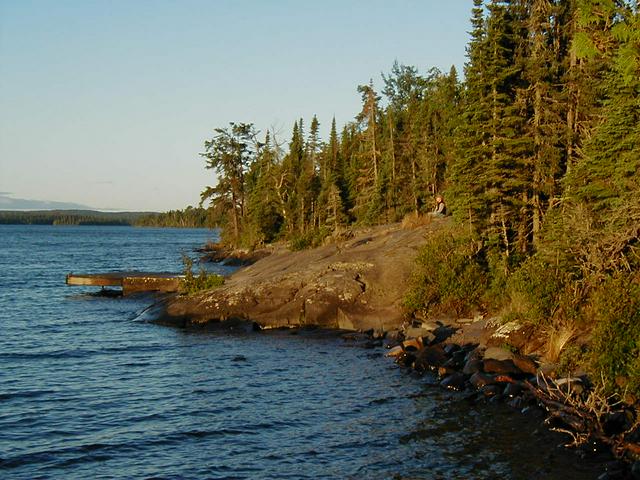
Isle Royale is a wilderness preserve first, a sanctuary for those seeking to experience it second, and a travel destination third. Although it accommodates all of these uses, that's the order of priority they take. So wildlife gets the run of the island, and human visitors are generally restricted to established trails and accessible lakes, with leave-no-trace camping protocols in effect. Modern conveniences and comforts are very limited; away from the small ports on either end of the island, "running water" means "a creek", and only "outhouse" pit toilets are available. (Many of the more accessible ones are stocked with toilet paper, but bring your own or be prepared to improvise.)
Lake Superior winters close the park from November through mid-April, with limited access before Memorial Day and after Labor Day; Isle Royale is the only U.S. National Park to shut down altogether for the winter. Because of this, along with its geographic isolation and challenging ruggedness, it receives fewer visitors in a year (17,500 in 2005) than many national parks endure in a day. Those visitors stay a remarkable average of 4-5 days each (even counting day-trippers), but it still has one of the lowest visitors-per-square-mile figures outside of the huge Alaskan parks. Which is, of course, a large part of its appeal. And it leaves these visitors wanting more, with the NPS's highest return-visit rate.
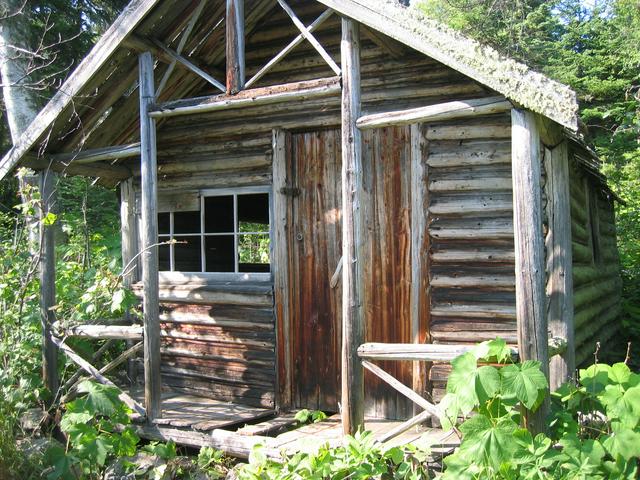 Over four millennia ago, Native Americans began visiting Isle Royale to dig for copper, to tap maple trees for sugar, and to fish. Since Europeans came to the area, it's been host to whitefish fisheries, a series of unprofitable copper mining efforts, and a resort community around 1900. In the 1920s, Detroit News journalist Albert Stoll Jr. visited Isle Royale, saw what commercial exploitation was beginning to do to undermine the wilderness, and campaigned for its protection; a plaque in his honor was later placed near the tip of Scoville Point. Isle Royale National Park was established by Congress in 1931, and the last of the land de-privatized in 1940 (with a few of the land owners given lifetime leases). The archipelago was designated a Wilderness Area in 1976, and named an International Biosphere Reserve in 1980.
Over four millennia ago, Native Americans began visiting Isle Royale to dig for copper, to tap maple trees for sugar, and to fish. Since Europeans came to the area, it's been host to whitefish fisheries, a series of unprofitable copper mining efforts, and a resort community around 1900. In the 1920s, Detroit News journalist Albert Stoll Jr. visited Isle Royale, saw what commercial exploitation was beginning to do to undermine the wilderness, and campaigned for its protection; a plaque in his honor was later placed near the tip of Scoville Point. Isle Royale National Park was established by Congress in 1931, and the last of the land de-privatized in 1940 (with a few of the land owners given lifetime leases). The archipelago was designated a Wilderness Area in 1976, and named an International Biosphere Reserve in 1980.
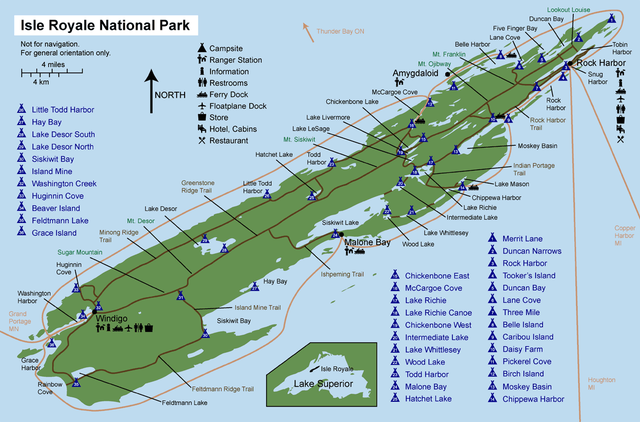
The archipelago (consisting of Isle Royale itself and dozens of smaller islands) is the edge of a geologic fault which pushed up from the lake floor and was scoured by ice-age glaciers into a long, ridged island, with lakes and inlets of Lake Superior filling in low points between some of the ridges. The south sides of these ridges and the south lakeshore tend to be more gently sloped; the north sides and lakeshore more steep. Crossing from one side of the island to the other isn't usually a great distance, but because of the ridges can involve a lot of climbing and descending.
The island and its ridges run roughly WSW-to-ENE end to end, but for informal navigational purposes they're usually described as if they ran directly west-to-east (a notion reinforced by the orientation of the park service's official map). When using a compass, keep in mind the island's true orientation. The Greenstone Ridge runs the length of the island, with a trail along most of its crest. Isle Royale itself is 45 miles (74 km) long and 9 miles (14 km) at its widest, with an area of about 205 mi² (530 km²). The highest point on the island is Mount Desor at 1394 feet (425 m) above sea level – about 800 feet (245 m) above lake level – with several other spots along the Greenstone above 1200 feet (365 m) in elevation.
The island is mostly forested in a mixture of boreal and northern hardwood ecosystems, with a selection of conifer (spruce, fir, pine) and deciduous (birch, aspen, maple, ash) trees. Past human habitation has left some apple trees behind. Marsh vegetation is more common in the west, but found in low spots everywhere. A wide variety of orchids and wildflowers can be found throughout the island. Berries grow wild; blueberries can be found on open ridge tops, and thimbleberries (with maple-like leaves bigger than your hand; white flowers in early summer, red berries in late summer) grow seemingly everywhere.
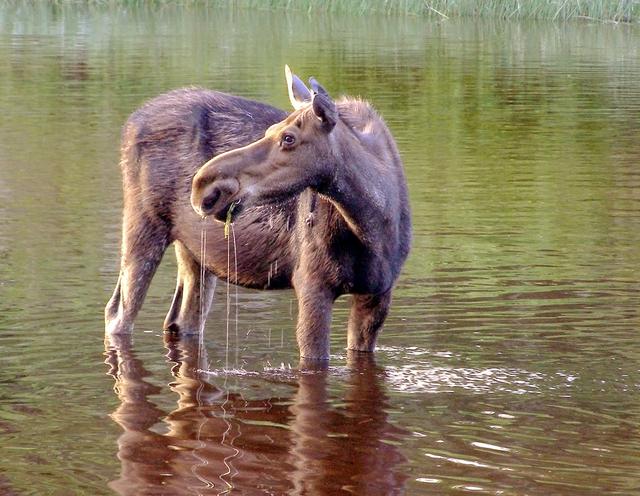
The island is far enough from the mainland and small enough in area to limit the variety of animals on it; there are no bears, deer, raccoons, nor cats of any kind. Around 1900, moose introduced themselves to the island, presumably swimming from Ontario. Wolves followed later, crossing increasingly rare safe ice bridges in 1948 and 1967. As a closed environment, the island serves as a prime field study of the relationship between prey and predator. Because the wolf population is descended from two small packs, the island also demonstrates the effects of inbreeding on their viability. Both populations have gone through booms and busts due to weather, disease, food availability, and predation (the past several summers' heat has brought the February 2007 moose population way down to 385, with 21 wolves trying to subsist on the survivors), but they still endure.
Other common mammals are red foxes (filling the scavenger niche, especially around camp sites), beavers (in inland lakes and ponds), red squirrels (everywhere), snowshoe hares, and otters. Loons, eagles, and ospreys nest on the island, and a large variety of songbirds, woodpeckers, and aquatic birds (especially gulls and ducks) will be seen. Painted turtles, garter snakes, and a few varieties of amphibians are common. Northern pike are plentiful in most of the inland lakes, along with varieties of trout, perch, walleye, and other sport fish. Mosquitoes, no-see-ums, and a few varieties of biting flies are unfortunately abundant, though the extent of these nuisances varies year to year, by season, and from one locale to another. Insect repellent is essential, and a face net will provide welcome relief when the bugs seem intent on driving you crazy even when your bug dope prevents them from landing. There are bees on the island as well.
At a latitude of 48° North, and with the moderating influence of cold Lake Superior, Isle Royale rarely gets hot by human standards. During the summer months you'll reach shorts-and-t-shirt weather in the afternoon, especially hiking up on the ridges, but you'll also experience some rather chilly nights, sometimes even below 50°F (10°C) in the "heat" of August. In May and October, temperatures can easily dip below freezing by night and stay below 60°F (15°C) all day. Rainfall fluctuates from month to month, but July and August have the least overcast days (making them the busiest weeks of the summer). Regardless, a stay of several days any time of the summer without at least some rain is uncommon; either bring rain gear or plan on spending time stuck in your tent or a shelter. The good news for people with hayfever is that they'll find few common pollen allergens in the air. (During its resort days, the island was a popular haven for allergy sufferers.) In the winter, conditions are inhospitable and the island is closed to all but wildlife researchers. Even the park headquarters relocate to Houghton for the winter.
A fee of $7 per calendar day on the island is charged for visitors 12 years and older, and to save time upon arrival is collected en route by the services providing transportation to and from the island. Note that the interagency parks passes can cover this fee.
Park visitors are required to file a plan with the rangers indicating the campgrounds they expect to use each night. This serves to make sure campers' plans are consistent with party-size and duration-of-stay limits on campgrounds (and reality), and to help the park service estimate campground usage. They don't care if you change your mind along the way (they expect that to happen), and only ask that campers let them know where you actually stayed before leaving. Special permits and reservations are required for groups of 7-10, for off-trail hikers, and for canoeists camping outside of designated campgrounds. Because noise levels go up exponentially as the size of camping parties increase, groups of more than 10 must split up and hike and camp separately. Fishing in Lake Superior and connected waters requires a paid license from the state; inland lakes have no licensing requirement. Hunting is not permitted.
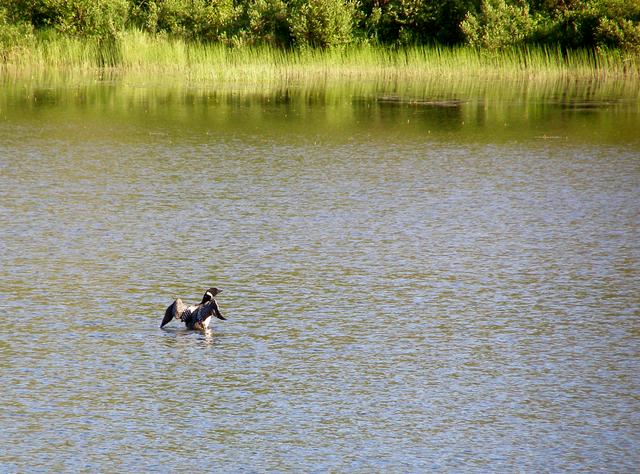
The primary attraction is the wilderness of the island. Although it isn't "untouched" – Isle Royale has a history of human habitation and use, and the trails and campgrounds are inherently non-virginal – the remoteness and careful management of the island have combined to make for one of the more authentically "wild" experiences within the National Park system. The trails generally adhere to leave-no-trace principles.
Secondarily, there's the wildlife. Sightings of small fauna such as squirrels and songbirds are inevitable. Fox, moose, and loon encounters can be expected if you look for them (and perhaps even if you don't). Signs of the island's wolf presence (e.g. footprints and scat) are common, and even nighttime howls or a chance glimpse through the trees are just common enough to keep hikers' eyes and ears open for them. Moose commonly use the island's trails as well, and leave plenty of droppings. When populations are high, moose sightings are fairly common. Their numbers have been low recently, however.
Depending on solar activity and magnetic field fluctuations, the aurora borealis ("Northern Lights") is frequently visible. On clear nights, the lack of light pollution offers outstanding star-gazing opportunities at lakeshores where the tree cover breaks.
The island's human history is also worth exploring. Surrounding Isle Royale there are several lighthouses you can visit as well as shipwreck sites. The remains of abandoned copper mines can be found near McCargoe Cove, on the Island Mine Trail, and near Windigo.
- Rock Harbor lighthouse. tall cylindrical tower built in 1855
- Edisen Historic Fishery. collection of seven buildings making up a commercial fishery, build 1895
- Passage Island lighthouse. built in 1882
- the cruise ship America wreck.
Rock Harbor lighthouse. tall cylindrical tower built in 1855
Edisen Historic Fishery. collection of seven buildings making up a commercial fishery, build 1895
Passage Island lighthouse. built in 1882
the cruise ship America wreck.
Fishing is a popular activity, which you can do from motorboats in the waters surrounding Isle Royale, or from canoes in its inland lakes (many of which are both secluded and teeming with fish). Angling in the waters of Lake Superior (including bays) requires a Michigan fishing license, which you can buy at either port's ranger station. Hunting is not permitted.
A number of ships have met disaster on the rocks and islets around Isle Royale, making the surrounding waters fairly popular with shipwreck divers.
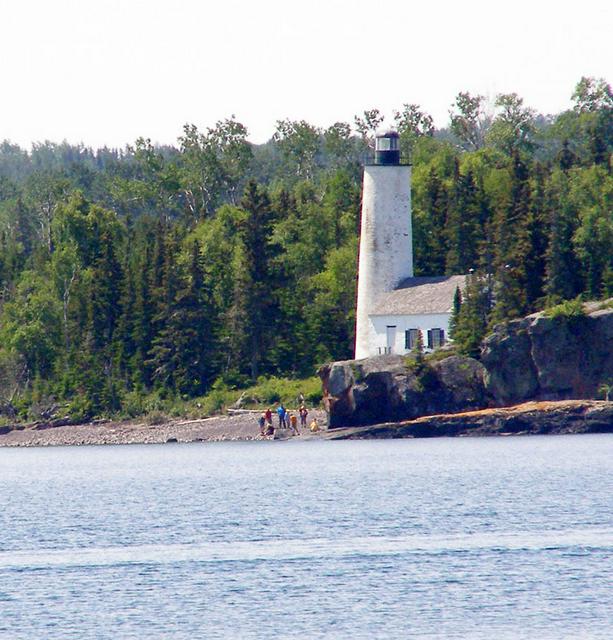
If you're spending the night at Rock Harbor campground, staying at Rock Harbor Lodge, or a day-tripper from Michigan, there are several ways to spend your day.
- Guided tours, organized activities, and boat expeditions are offered; check at the lodge to see what's on the schedule. The boat trips can take you to some of the more interesting spots along the southeast end of the island, such as Passage Island and its lighthouse a few miles into Lake Superior, and several of the sites mentioned below for self-exploration. The lodge also schedules nightly informational programs.
- Rent a canoe and paddle Tobin Harbor, a long, sheltered inlet on the north side of the narrow peninsula the lodge and ranger station are on. This lightly-developed "historic district" was a popular site for little cottages a century ago (mostly out near the Lake), but aside from the periodic floatplane landing/take-off, it's generally more quiet than "hectic" Rock Harbor, and also provides a shortcut to the trail leading to the breathtaking view from Lookout Louise up on the Greenstone Ridge. (Sample canoe rental rate: $18 for six hours.)
- Rent a canoe and paddle Rock Harbor. You can work your way along the shoreline of the harbor, or explore the several barrier islands that shelter it from Lake Superior. Raspberry Island (turn slightly to the left when you leave Snug Harbor) has a trail with closely-placed examples of several of Isle Royale's environments (including some short but difficult sections of trail). Note that Rock Harbor offers little shelter from windy weather, paddling between the barrier islands can expose you to Lake Superior waves, and on the lakeward side of the islands crashing waves and swells can easily tip or swamp a canoe. You'll also have to be prepared for periodic wakes from motorboats zipping the length of the harbor for one reason or another.
- Rent a boat with an outboard motor and go fishing in Rock Harbor or explore farther afield. East Caribou and Mott Islands (joined by a footbridge) are home to the sometimes noisy park headquarters, but also have a 2.5-mile trail that takes you to the Lake Superior shore on the side away from Rock Harbor. Edisen Fishery and Rock Harbor Lighthouse (both well-preserved 19th century relics) are across from Daisy Farm campground at the mouth of Moskey Basin. Just a little west of Edisen is another former fishery which is the summer residence of wolf/moose researchers Candy and Rolf Peterson, who have a huge collection of moose bones in their yard (look for the Norwegian flag).
- To spend a few hours on your feet, hike the Stoll Trail east out to rocky Scoville Point, passing a pair of old copper-mining pits along the way. Or take the Rock Harbor Trail a couple miles west to Suzy's Cave, a "secret passage" formed by the lake when it was much higher, and return on the Tobin Harbor Trail (or vice versa). The Tobin Harbor and Stoll Trails are the least difficult, but both involve some tricky footsteps (Stoll especially) and steep stretches of trail (Tobin Harbor especially).
- For a longer hike, trek up onto the Greenstone Ridge to Mt. Franklin and back (about 10 miles round-trip). For a vigorous day-long hike, continue west to Mt. Ojibway and return by way of the Daisy Farm and Rock Harbor Trails (about 15 miles total). No water sources exist on the ridge proper, and it can reach the low-80s F (~25 °C) on summer afternoons at higher altitudes -- pack accordingly.
Guided tours, organized activities, and boat expeditions are offered; check at the lodge to see what's on the schedule. The boat trips can take you to some of the more interesting spots along the southeast end of the island, such as Passage Island and its lighthouse a few miles into Lake Superior, and several of the sites mentioned below for self-exploration. The lodge also schedules nightly informational programs.
Rent a canoe and paddle Tobin Harbor, a long, sheltered inlet on the north side of the narrow peninsula the lodge and ranger station are on. This lightly-developed "historic district" was a popular site for little cottages a century ago (mostly out near the Lake), but aside from the periodic floatplane landing/take-off, it's generally more quiet than "hectic" Rock Harbor, and also provides a shortcut to the trail leading to the breathtaking view from Lookout Louise up on the Greenstone Ridge. (Sample canoe rental rate: $18 for six hours.)
Rent a canoe and paddle Rock Harbor. You can work your way along the shoreline of the harbor, or explore the several barrier islands that shelter it from Lake Superior. Raspberry Island (turn slightly to the left when you leave Snug Harbor) has a trail with closely-placed examples of several of Isle Royale's environments (including some short but difficult sections of trail). Note that Rock Harbor offers little shelter from windy weather, paddling between the barrier islands can expose you to Lake Superior waves, and on the lakeward side of the islands crashing waves and swells can easily tip or swamp a canoe. You'll also have to be prepared for periodic wakes from motorboats zipping the length of the harbor for one reason or another.
Rent a boat with an outboard motor and go fishing in Rock Harbor or explore farther afield. East Caribou and Mott Islands (joined by a footbridge) are home to the sometimes noisy park headquarters, but also have a 2.5-mile trail that takes you to the Lake Superior shore on the side away from Rock Harbor. Edisen Fishery and Rock Harbor Lighthouse (both well-preserved 19th century relics) are across from Daisy Farm campground at the mouth of Moskey Basin. Just a little west of Edisen is another former fishery which is the summer residence of wolf/moose researchers Candy and Rolf Peterson, who have a huge collection of moose bones in their yard (look for the Norwegian flag).
To spend a few hours on your feet, hike the Stoll Trail east out to rocky Scoville Point, passing a pair of old copper-mining pits along the way. Or take the Rock Harbor Trail a couple miles west to Suzy's Cave, a "secret passage" formed by the lake when it was much higher, and return on the Tobin Harbor Trail (or vice versa). The Tobin Harbor and Stoll Trails are the least difficult, but both involve some tricky footsteps (Stoll especially) and steep stretches of trail (Tobin Harbor especially).
For a longer hike, trek up onto the Greenstone Ridge to Mt. Franklin and back (about 10 miles round-trip). For a vigorous day-long hike, continue west to Mt. Ojibway and return by way of the Daisy Farm and Rock Harbor Trails (about 15 miles total). No water sources exist on the ridge proper, and it can reach the low-80s F (~25 °C) on summer afternoons at higher altitudes -- pack accordingly.
Those staying at Washington Creek campground or day-tripping from Minnesota have a few options as well.
- There are two self-guided nature trail loops at Windigo, one less than a mile, the other a little more than a mile.
- Rent a canoe and explore sheltered Washington Harbor, and Grace Harbor at the edge of Lake Superior. These have plenty of shoreline, several islands, and the barely-underwater sunken cruise ship America to explore (best reached by motorboat).
- The old Wendigo Mine ruins (not a typo; 19th-century spellings are sometimes inconsistent) are a couple miles inland on the East Huginnin Cove Trail.
- Hiking the first 2 miles of the Feldtmann Ridge Trail and back provides good views of Washington Harbor, including a short trail leading to a good overlook. Continuing farther offers less scenic views, but nice woodland hiking.
- The 9-mile trail loop to Huginnin Cove and back is too far for a day-visitor to the island, but can be done in 4-6 hours if you're staying at Washington Creek campground, especially if you leave your gear behind. It has some difficult, steep stretches of trail.
- Similarly, there's an overlook of the Minong Ridge a little more than 4 miles along that trail.
- Dive the "America." If you have the ability to provide your own boat transportation (there are no charters regularly scheduling dives, and exclusive charter might be pricey) and provide your own equipment (multiple tanks of air to make the trip worthwhile) the "America" is a wonderful experience. The bow of the ship pokes out from the Lake approximately two feet while the stern lies at approximately 84 feet. The vessel is remarkably intact, even following salvage attempts. Special things to see are the engine room, grand staircase, dining area and kitchen, a model-something Ford (complete with hand crank on front). Clothing and ship equipment still exist on this wreck. No human passengers perished on its sinking, however, there has been at least one recorded diving death on this wreck near the kitchen area during a wreck penetration dive. Do not dive or penetrate this wreck if you are not trained in wreck penetration. While no humans perished at sinking, there was one fatality, a pet dog.
There are two self-guided nature trail loops at Windigo, one less than a mile, the other a little more than a mile.
Rent a canoe and explore sheltered Washington Harbor, and Grace Harbor at the edge of Lake Superior. These have plenty of shoreline, several islands, and the barely-underwater sunken cruise ship America to explore (best reached by motorboat).
The old Wendigo Mine ruins (not a typo; 19th-century spellings are sometimes inconsistent) are a couple miles inland on the East Huginnin Cove Trail.
Hiking the first 2 miles of the Feldtmann Ridge Trail and back provides good views of Washington Harbor, including a short trail leading to a good overlook. Continuing farther offers less scenic views, but nice woodland hiking.
The 9-mile trail loop to Huginnin Cove and back is too far for a day-visitor to the island, but can be done in 4-6 hours if you're staying at Washington Creek campground, especially if you leave your gear behind. It has some difficult, steep stretches of trail.
Similarly, there's an overlook of the Minong Ridge a little more than 4 miles along that trail.
If you have more than a few hours to spend on the island, head off into the backcountry. The National Geographic Society publishes a very good waterproof topographic map of Isle Royale with campgrounds and trails marked, and mileages for both land and water routes between sites at $10. The book Isle Royale National Park: Foot Trails & Water Routes by Jim DuFresne is an excellent resource, describing the regions and routes in experienced detail. Both are available at the information offices on the island, but are most useful for planning your trip before arrival.
The interconnected trails and the portage-linked lakes and bays make it easy for you to devise your own itinerary among the island's campgrounds. But there are some common routes that begin and end at the ports, or at docks accessible by ferry or water taxi:
- Greenstone Ridge Trail. The Greenstone (named for the colored mineral-bearing "gemstone" embedded in the rock various places on the island) runs nearly the full length of the island, along its spine. Its western end is at the Windigo ranger station and its eastern end is across Tobin Harbor from the station at Snug Harbor. (Most hikers go around Tobin Harbor to join the Greenstone at Mount Franklin.) It ranges from easy to moderately difficult hiking for 5-6 days, and is easy to follow.
- Rock Harbor Trail. A mostly easy-to-moderate hike, largely along the shore of Rock Harbor and near Moskey Basin, then inland to Lake Richie. You can do it as an out-and-back hike (4-5 days), as half of a loop with the Greenstone (4-6 days), or get dropped off at Chippewa Harbor and hike back to Snug Harbor (2-3 days).
- Feldtmann Ridge/Island Mine Trail. Along with a segment of the Greenstone, these trails form a loop starting and ending at Windigo. It's moderately difficult hiking both through wetlands and over ridges, and takes 3-4 days.
- Indian Portage Trail. This series of trails between and around several interior lakes crosses the island from Chippewa Harbor to McCargoe Cove. Moderately difficult up-and-down-and-up-and-down hiking, taking 1-2 days.
- Minong Ridge Trail. This rugged, less-groomed trail is harder to follow than the others, on a ridge near the north shore, from McCargoe Cove to Windigo. It takes 4-5 difficult days to hike, the western-most segment being nearly 13 miles between campgrounds.
Greenstone Ridge Trail. The Greenstone (named for the colored mineral-bearing "gemstone" embedded in the rock various places on the island) runs nearly the full length of the island, along its spine. Its western end is at the Windigo ranger station and its eastern end is across Tobin Harbor from the station at Snug Harbor. (Most hikers go around Tobin Harbor to join the Greenstone at Mount Franklin.) It ranges from easy to moderately difficult hiking for 5-6 days, and is easy to follow.
Rock Harbor Trail. A mostly easy-to-moderate hike, largely along the shore of Rock Harbor and near Moskey Basin, then inland to Lake Richie. You can do it as an out-and-back hike (4-5 days), as half of a loop with the Greenstone (4-6 days), or get dropped off at Chippewa Harbor and hike back to Snug Harbor (2-3 days).
Feldtmann Ridge/Island Mine Trail. Along with a segment of the Greenstone, these trails form a loop starting and ending at Windigo. It's moderately difficult hiking both through wetlands and over ridges, and takes 3-4 days.
Indian Portage Trail. This series of trails between and around several interior lakes crosses the island from Chippewa Harbor to McCargoe Cove. Moderately difficult up-and-down-and-up-and-down hiking, taking 1-2 days.
Minong Ridge Trail. This rugged, less-groomed trail is harder to follow than the others, on a ridge near the north shore, from McCargoe Cove to Windigo. It takes 4-5 difficult days to hike, the western-most segment being nearly 13 miles between campgrounds.
- Southern lakes. A series of lakes connected by relatively short portages runs from Chippewa Harbor through Lakes Whittlesey, Wood, Siskiwit (the island's largest), Intermediate, and Richie, reaching territory inaccessible by hikers. A 2-mile portage connects Lake Richie to Moskey Basin and Rock Harbor. (With a special permit, you can camp anywhere along the shorelines of the canoe-only lakes.)
- Indian Portage. To cross the island via inland lakes, there's a 1.2-mile portage from Chippewa Harbor to Lake Richie, somewhat shorter ones to Lakes LeSage, Livermore, and Chickenbone, then another hike to McCargoe Cove (roughly following the Indian Portage Trail). This route crosses the Greenstone Ridge, so those short portages are difficult.
- Northeast bays. Starting from McCargoe Cove, a series of channels, coves, and bays on the northeast end of the island provide a reasonably safe, sheltered route through the waters of Lake Superior back to Rock Harbor. This route includes a few fairly short portages, and one heartbreaker up over the Greenstone to avoid a dangerous paddle around the exposed tip of the island.
- South shore. For experienced sea kayakers only (canoes aren't safe in the open waters of Superior, and even kayaks are advised to stick close to shore) you can make your way by a series of lakeside campgrounds from Rock Harbor to Windigo, portage-free.
Southern lakes. A series of lakes connected by relatively short portages runs from Chippewa Harbor through Lakes Whittlesey, Wood, Siskiwit (the island's largest), Intermediate, and Richie, reaching territory inaccessible by hikers. A 2-mile portage connects Lake Richie to Moskey Basin and Rock Harbor. (With a special permit, you can camp anywhere along the shorelines of the canoe-only lakes.)
Indian Portage. To cross the island via inland lakes, there's a 1.2-mile portage from Chippewa Harbor to Lake Richie, somewhat shorter ones to Lakes LeSage, Livermore, and Chickenbone, then another hike to McCargoe Cove (roughly following the Indian Portage Trail). This route crosses the Greenstone Ridge, so those short portages are difficult.
Northeast bays. Starting from McCargoe Cove, a series of channels, coves, and bays on the northeast end of the island provide a reasonably safe, sheltered route through the waters of Lake Superior back to Rock Harbor. This route includes a few fairly short portages, and one heartbreaker up over the Greenstone to avoid a dangerous paddle around the exposed tip of the island.
South shore. For experienced sea kayakers only (canoes aren't safe in the open waters of Superior, and even kayaks are advised to stick close to shore) you can make your way by a series of lakeside campgrounds from Rock Harbor to Windigo, portage-free.
There is a fairly small but well-stocked camp store at Snug Harbor and an even smaller store at Windigo, both near their respective NPS information offices. You shouldn't rely on either of them for equipping or provisioning your trip (due to the high prices if nothing else), but they provide a handy safety net if you discover you've left something behind, and they're popular with those just coming off the trail looking for food that doesn't require the addition of hot water. They sell dramamine by the dose, for if the ferry ride home looks like it's going to be rough.
If you want a souvenir from the island, there's an assortment of t-shirts and sweatshirts in the camp stores, and Rock Harbor Lodge (which operates the stores) has a small gift shop (sharing space with the Greenstone Grill) with a larger selection of merchandise, including knick-knacks, plush animals, and the like... so don't go and help yourself to things you find in the wilderness. Removing samples of greenstone from the park is prohibited, and tampering with the wildlife and environment in general is discouraged. "Take nothing but pictures and leave nothing but footprints."
For most visitors, you'll be eating what you pack in, so freeze-dried meals, candy-nuts-and-granola mixtures, and oatmeal are your best bet for on the trails and lakes. Fires are prohibited except in selected sites with community fire rings or grills, so you'll need a camp stove. Edible berries can be picked and eaten along the trails when in season. Anglers (especially with watercraft) can add freshly caught fish to the menu. The camp stores at Snug Harbor and Windigo have a limited selection of packaged groceries for housekeeping cabins, freeze-dried food for in the wilderness, and chips or candy for those just returning.
- Rock Harbor Lodge Dining Room, Rock Harbor Lodge (east end of Snug Harbor, +1 906 337-4993. Daily 7AM-8:30AM, noon-1:30PM, and 5:30PM-7:30PM. Nothing too fancy, but pleasant. This is where lodge guests on the meals-included "American Plan" eat, but "European Plan" guests, cabin guests, and campers are also welcome (though if you're just coming in off a week on the trails, buying a shower first would be a nice courtesy). The lake trout is really fresh, but be prepared to pay premium prices for the luxury of kitchen-prepared food in the wilderness. Breakfast $13.50/$9, lunch $16/$11, dinner $30.50/$20 (adult/child).
- Greenstone Grill, Rock Harbor Lodge (east end of Snug Harbor. Simple fare such as burgers, sandwiches, pizza, coffee, and drinks. Very reasonbly priced, given the location, and it's so much nicer to hear the crunch of fresh lettuce and onions on a burger than the crunch of unreconstituted freeze-dried peas in your beef stew.
- Windigo camp store, +1 906-482-0984. Simple cold sandwiches; the only source of prepared food on the west end of the island.
Rock Harbor Lodge Dining Room, Rock Harbor Lodge (east end of Snug Harbor, +1 906 337-4993. Daily 7AM-8:30AM, noon-1:30PM, and 5:30PM-7:30PM. Nothing too fancy, but pleasant. This is where lodge guests on the meals-included "American Plan" eat, but "European Plan" guests, cabin guests, and campers are also welcome (though if you're just coming in off a week on the trails, buying a shower first would be a nice courtesy). The lake trout is really fresh, but be prepared to pay premium prices for the luxury of kitchen-prepared food in the wilderness. Breakfast $13.50/$9, lunch $16/$11, dinner $30.50/$20 (adult/child).
- Greenstone Grill, Rock Harbor Lodge (east end of Snug Harbor. Simple fare such as burgers, sandwiches, pizza, coffee, and drinks. Very reasonbly priced, given the location, and it's so much nicer to hear the crunch of fresh lettuce and onions on a burger than the crunch of unreconstituted freeze-dried peas in your beef stew.
Rock Harbor Lodge Dining Room, Rock Harbor Lodge (east end of Snug Harbor, +1 906 337-4993. Daily 7AM-8:30AM, noon-1:30PM, and 5:30PM-7:30PM. Nothing too fancy, but pleasant. This is where lodge guests on the meals-included "American Plan" eat, but "European Plan" guests, cabin guests, and campers are also welcome (though if you're just coming in off a week on the trails, buying a shower first would be a nice courtesy). The lake trout is really fresh, but be prepared to pay premium prices for the luxury of kitchen-prepared food in the wilderness. Breakfast $13.50/$9, lunch $16/$11, dinner $30.50/$20 (adult/child).
- Greenstone Grill, Rock Harbor Lodge (east end of Snug Harbor. Simple fare such as burgers, sandwiches, pizza, coffee, and drinks. Very reasonbly priced, given the location, and it's so much nicer to hear the crunch of fresh lettuce and onions on a burger than the crunch of unreconstituted freeze-dried peas in your beef stew.
Windigo camp store, +1 906-482-0984. Simple cold sandwiches; the only source of prepared food on the west end of the island.
There is potable water available at the ranger stations at Snug Harbor and Windigo and their neighboring campgrounds of Rock Harbor and Washington Creek. All campgrounds have a natural water supply on-site or nearby, but these sources should be presumed infected with parasites, and either filtered or thoroughly boiled before drinking or cooking. Filters are the best option for drinking water, because that retains its refreshing coldness, and is also most practical for the gallon/day 3.5 L) or more each person is likely to need. Chemical purification tablets won't kill the tapeworm eggs that the moose deposit in the water supply.
Soft drinks are sold at both camp stores. The Greenstone Grill (see "Eat") also serves a small assortment of mainstream U.S. and Canadian beers (including Moosehead), and a small but well-chosen selection of Michigan microbrews. Bring your own liquor to the island if you wish, but keep in mind that drunken campers disturb both wildlife and other campers, and alcohol is prohibited at a few campgrounds. Besides, the last thing you need in the wilderness is impaired judgment, dehydration, a hangover, and a bottle to carry.
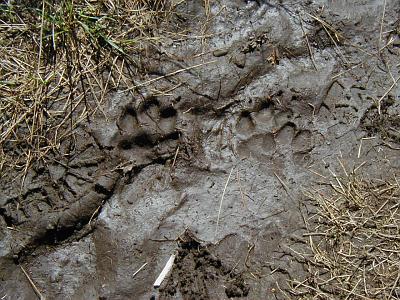
The Brothers Grimm gave wolves a very unfair portrayal; unless you are a young or feeble moose, you're in no danger from them. Although they've gotten a little less furtive lately as they look harder for moose (whose numbers have gone down substantially), they're still very good at avoiding humans, and even mere sightings are still infrequent. On the other hand, moose can be very dangerous if provoked (there's a reason wolves only go after the weak ones, and do so in packs), especially if you get between a mother and her calf, or if you confront a bull during mating season. But otherwise they're nothing to be afraid of, and will probably regard you the same way.
The greatest danger is your own foolishness: pushing yourself too hard, or ignoring basic principles of wilderness health and safety (e.g. keeping dry, water sanitation, floatation devices on the water). Canoeing, kayaking, or swimming in Lake Superior can be particularly hazardous due to the potential roughness of the water (it's more like a freshwater sea than a mere lake) and the hypothermia-inducing temperature just below the surface year-round.
The water from Lake Superior is safe enough when filtered, but some streams and inland lake sources are not as wholesome. Good filtration (not iodine tablets) is a must and some water from marshlands may need to be pre-filtered to prevent clogging. The taller ridges can reach 80+ degrees on a warm summer's day, and there are no water sources up there. Plan ahead and bring plenty of water, as the ridge trails are a strenuous hike. Nothing is worse than being exhausted and out of water 1000 feet above Lake Superior!
If you're injured, there's limited medical assistance available on the island, and it's going to have a difficult time getting to you in the backcountry. There are ranger stations at Snug Harbor, Windigo, Malone Bay (on the south shore), and Amygdaloid Island (off the northeast shore), and a ranger resident at Daisy Farm, any of which can radio for help and arrange for helicopter transport to the mainland (at your expense) for professional medical care.
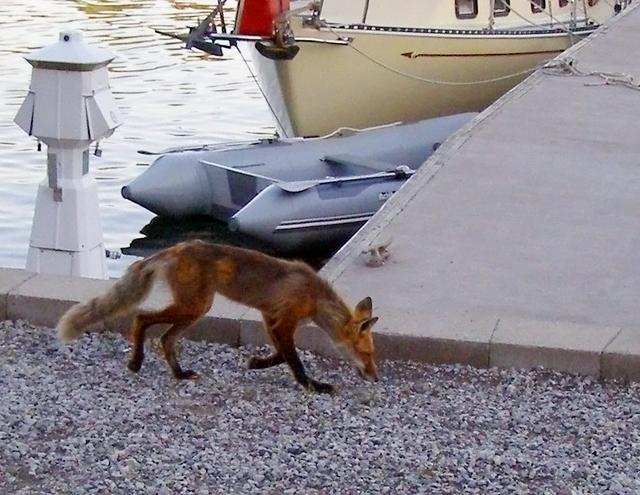
Surprisingly, there is a theft problem at Isle Royale campgrounds, and the culprits inevitably escape prosecution on the grounds that they are not human. Foxes are the worst culprits, potentially stealing anything left unattended, including boots, socks, and even cameras. Squirrels – especially those who've had a previous taste of the exotic foods humans eat – will brazenly steal food from your hand when your head is turned (not much caring if they bite you in the process), or chew through your backpack if they catch a whiff of such ambrosia inside. Double-plastic-bagging and vigilance are advised. This is important both for your own well-being and that of the animals; camp foxes quickly become dependent on human food and stop hunting, which is both nutritionally bad for them and leaves them to starve when the humans all go away for the long winter.
The phone numbers included here are useful for planning your trip, not for calling from Isle Royale, where phone service is almost non-existent. At Snug Harbor there's a cellular pay phone on an amplified antenna for "Yeah, Mom, I made it back to the ranger station" calls (credit cards only; $5 for the first two minutes). Mobile phones won't work unless you're on a ridge or a part of the island close to Thunder Bay, Ontario, where maybe you'll get a weak signal. You can bring your phone along "for emergencies", but the odds of it working when you want it to are slim enough to make it just a half pound of dead weight in your pack. Don't even think about trying to blog your trip.
If traveling through Grand Portage, the Boundary Waters Canoe Area of Minnesota and Quetico Provincial Park of Ontario provide a paddling paradise to the west. Houghton-Hancock and Copper Harbor are located on the scenic Keweenaw Peninsula (Isle Royale's geological sibling), and it's not far from there to Pictured Rocks National Lakeshore, another nice hiking area to the southeast.
